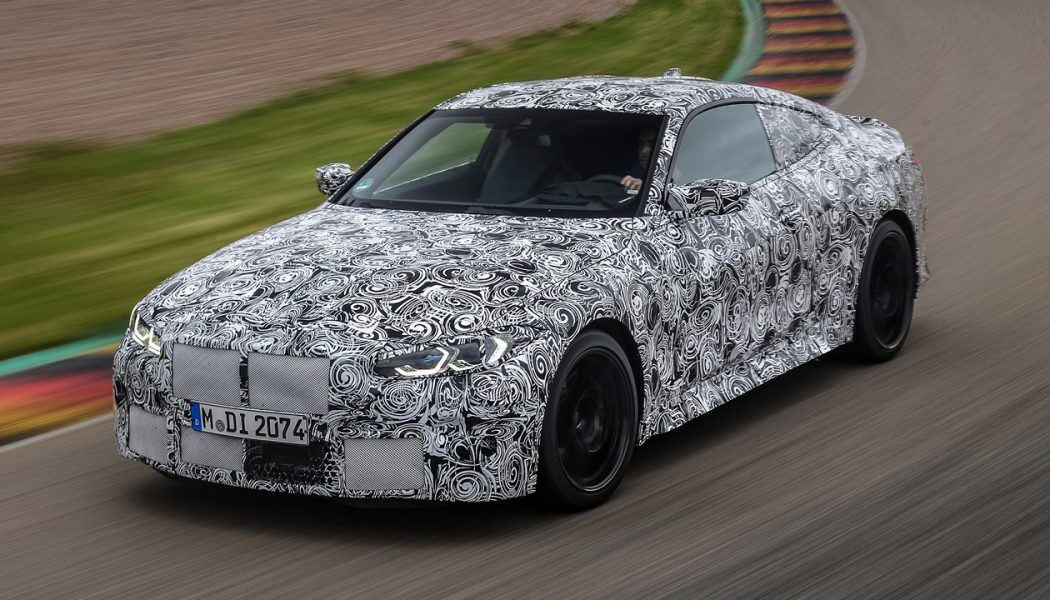The craziest moment during BMW’s virtual-reality Connected Car press event was briefly sensing that zoned-out, mental blue-screen feeling that’s the hallmark of jet lag. We’re familiar, thanks to those many annual European press trips we (usually) attend to log miles in the newest cars on the Continent’s best roads. Too many old triggers were piling up—I notice that Munich looks overcast again outside the stopped 5 Series‘s windshield in which I’m twisted to my left in the passenger seat, glancing back and forth between the car’s info screen and the monotone-voiced BMW rep behind the wheel who’s virtually explaining everything to me. There’s been no nine-hour time change, or endless, hissing 37,000-ft flight, or waking up at 2:45 a.m. to stare at the hotel room’s ceiling. No, this is all real enough for me to flinch with an instant of VR jet lag, even though there is no 5 Series, or BMW rep, or overcast skies beyond.
In reality, I’m sitting in my heavy wooden chair in Costa Mesa, turned to my left nodding at a wall with a painting of trees on it, while looking like a robot. (I’m wearing an Oculus Go VR headset and Bose headphones on my head.) As the focus of the virtual BMW presentation moves to the right, I pick up the heavy chair’s arms and hop it around to face that direction more comfortably. Fumbling for my coffee cup, I take a big drink of Major Dickason’s joe, being careful not to pour it down my chin, because this novel rollout of electronic and digital-business features is too interesting to interrupt.
If you’ve been living in a world where everything Tesla has been doing for the last eight years has somehow been redacted from your newspaper, online news, TV, radio, or casual conversation, this stuff will freak you out. But, even for seen-it-all Teslarati, it’s still pretty cool. Part of BMW’s presentation, however, focused on the rather mundane task of remotely updating its vehicles via a data connection and downloads from the cloud, albeit with somewhat newfangled consequences.
For cars running their connected Operating System 7, BMWs will start to behave more like your phone or laptop. Not only can every line of code in the car be over-the-air (OTA) updatable, features will be available by subscription. For instance, if you’re usually just driving around town, you probably don’t need adaptive cruise control. Heading off on a long-distance driving trip? You can subscribe to the stress-relieving feature for a month (assuming your Bimmer came equipped with the necessary hardware from the factory). If you like it, Remote Software Upgrade lets “book” the feature for a further one or three years. And this OTA subscribing extends to used BMWs with OS7, too, where, say, you could “book” the seat heater even if the original owner never activated it. Yes, this implies a future in which you pay for your car’s features on an ongoing basis, rather than at the point of purchase. Those who like flexibility may like it, others who wear tinfoil hats or worry that Big Business is bleeding us dry may not like the forever shopping experience this portends.
OS7’s connectivity will rely on cloud computing to crunch a better navigation experience by recognizing typed or spoken, point-of-interest, and returning a picture of the place, its hours of operation (where applicable), and a route to it, with the graphical Intelligent Personal Assistant attentively leaning towards whoever’s speaking . Meanwhile, the cloud is harvesting an enormous amount of anonymous data from BMW’s 14-million-car fleet. Traffic detected on neighborhood streets will help avoid those detours through them that can end in a snarled backup; if the stability control of a car ahead (informed by the outside temperature) suspects a slippery road, you and the other BMW’s following, will be warned; the electric BMW experience is enhanced by Connected Charging services which includes station’s hours of operation and any diners and cafes nearby while you’re juicing up.
Street-parking information will be crowd-detected by the ultrasonic sensors of fleet BMWs circulating cities. With that, the navigation system will guide you to streets where there’s a higher probability of an open street parking space – even taking into account the size of your car and those of the parking spaces. (Amazingly, BMW claims 40 percent of Berlin’s traffic comes from cars looking for parking spaces). As this BMW fleet circulates the planet’s roads, the AI hive mind is detecting and accumulating road signage (25 million per day) and trouble spots—98.5 percent of Germany’s entire road system is re-driven every single day.
And there are other GPS-triggered behaviors, such as plug-in hybrids automatically switching to EV mode when they enter “eDrive” (green) zones in European cities (there are over 80 of them), or lowering the driver’s window approaching a parking garage (which can be initiated via voice command, as well). On a less spectacular level, there also is BMW Digital Key (recently shown by Apple) which uses near-field communication (NFC) tech to let your iPhone lock, unlock, and start the car, and it’s sharable on up to five other phones. A smart aspect of this is that it lets you restrict some of those users to a speed limit, powertrain output reduction, and even radio volume level. Oh, and one last thing, as Steve Jobs used to say: Now, Android Auto is available, too. Well, I guess he wouldn’t say that. But even for the Tesla-savvy, this is an impressive move for a legacy car company that’s long been in bed with Apple.
This was a ton of information for a demonstration in my own home. Pulling off the Bose headphones and the Oculus headset, Munich’s gone. I’m back in Costa Mesa. That was quick—no walking through the X-ray machine in my socks, no carefully climbing over a snoring dude with the cabin lights dimmed to get to the lavatory, no surly customs agent yelling “NEXT!” at me. We may have reached Peak Zoom Meeting, but I’d take more press trips via Oculus VR anytime. While it’d be cool if BMW incorporated more of this type of VR into its cars, rather than its presentations, we’re looking forward to trying its cloud updates and unique subscription model for features, even if it seems to imply a future where we pay to use stuff already installed on our cars (oh, wait, Tesla already does that . . . ).










